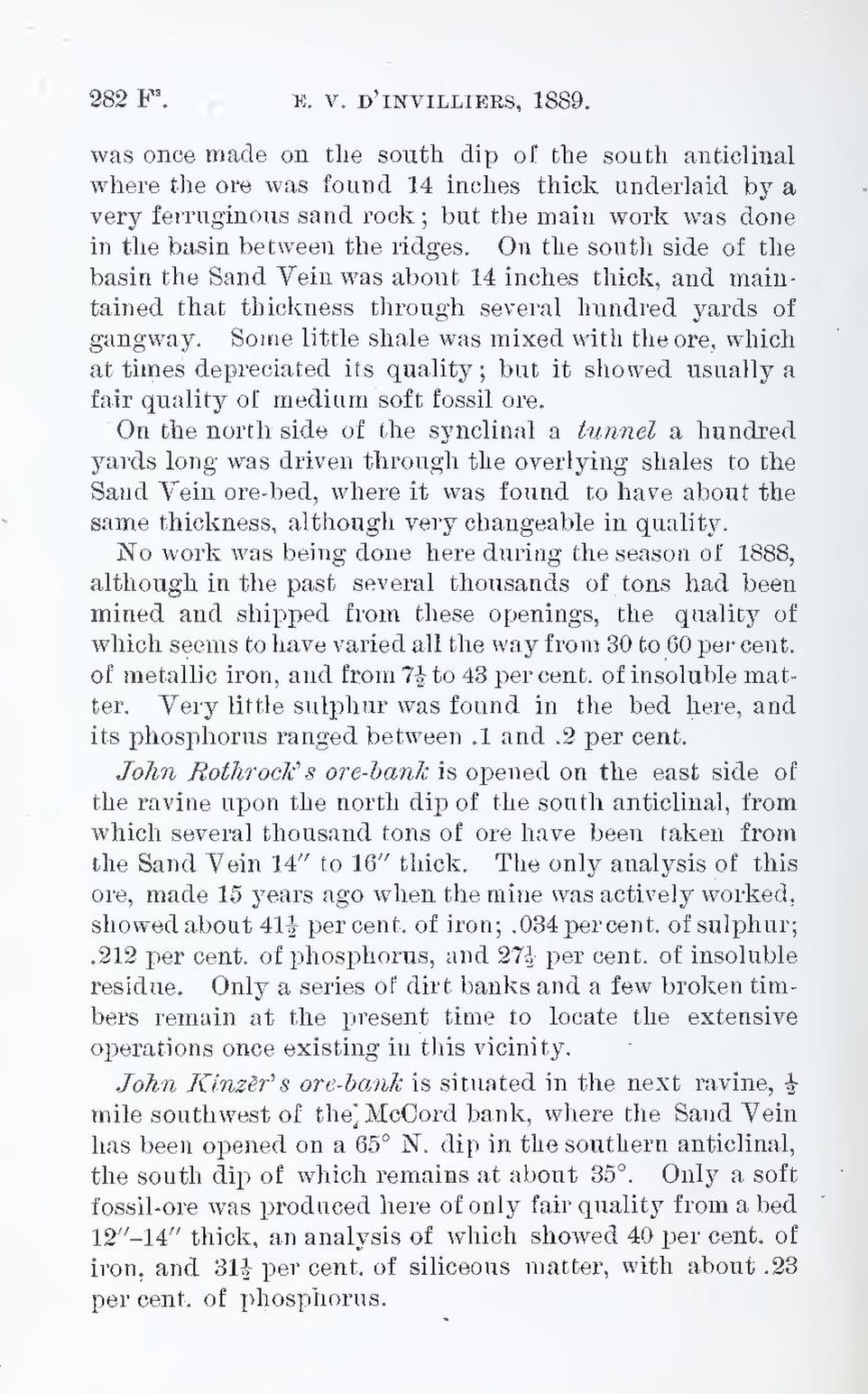was once made on the south dip of the south anticlinal where the ore was found 14 inches thick underlaid by a very ferruginous sand rock; but the main work was done in the basin between the ridges. On the south side of the basin the Sand Vein was about 14 inches thick, and maintained that thickness through several hundred yards of gangway. Some little shale was mixed with the ore, which at times depreciated its quality; but it showed usually a fair quality of medium soft fossil ore.
On the north side of the synclinal a funnel a hundred yards long was driven through the overlying shales to the Sand Vein ore-bed, where it was found to have about the same thickness, although very changeable in quality.
No work was being done here during the season of 1888, although in the past several thousands of tons had been mined and shipped from these openings, the quality of which seems to have varied all the way from 30 to 60 per cent. of metallic iron, and from 7½ to 43 per cent. of insoluble matter. Very little sulphur was found in the bed here, and its phosphorus ranged between .1 and .2 per cent.
John Rothrock’s ore-bank is opened on the east side of the ravine upon the north dip of the south anticlinal, from which several thousand tons of ore have been taken from the Sand Vein 14″ to 16″ thick. The only analysis of this ore, made 15 years ago when the mine was actively worked, showed about 41½ per cent. of iron; .034 percent. of sulphur; .212 per cent. of phosphorus, and 27½ per cent. of insoluble residue. Only a series of dirt banks and a few broken timbers remain at the present time to locate the extensive operations once existing in this vicinity.
John Kinzer’s ore-bank is situated in the next ravine, ½ mile southwest of the McCord bank, where the Sand Vein has been opened on a 65° N. dip in the southern anticlinal, the south dip of which remains at about 35°. Only a soft fossil-ore was produced here of only fair quality from a bed 12″–14″ thick, an analysis of which showed 40 per cent. of iron, and 31½ per cent. of siliceous matter, with about .23 per cent. of phosphorus.
